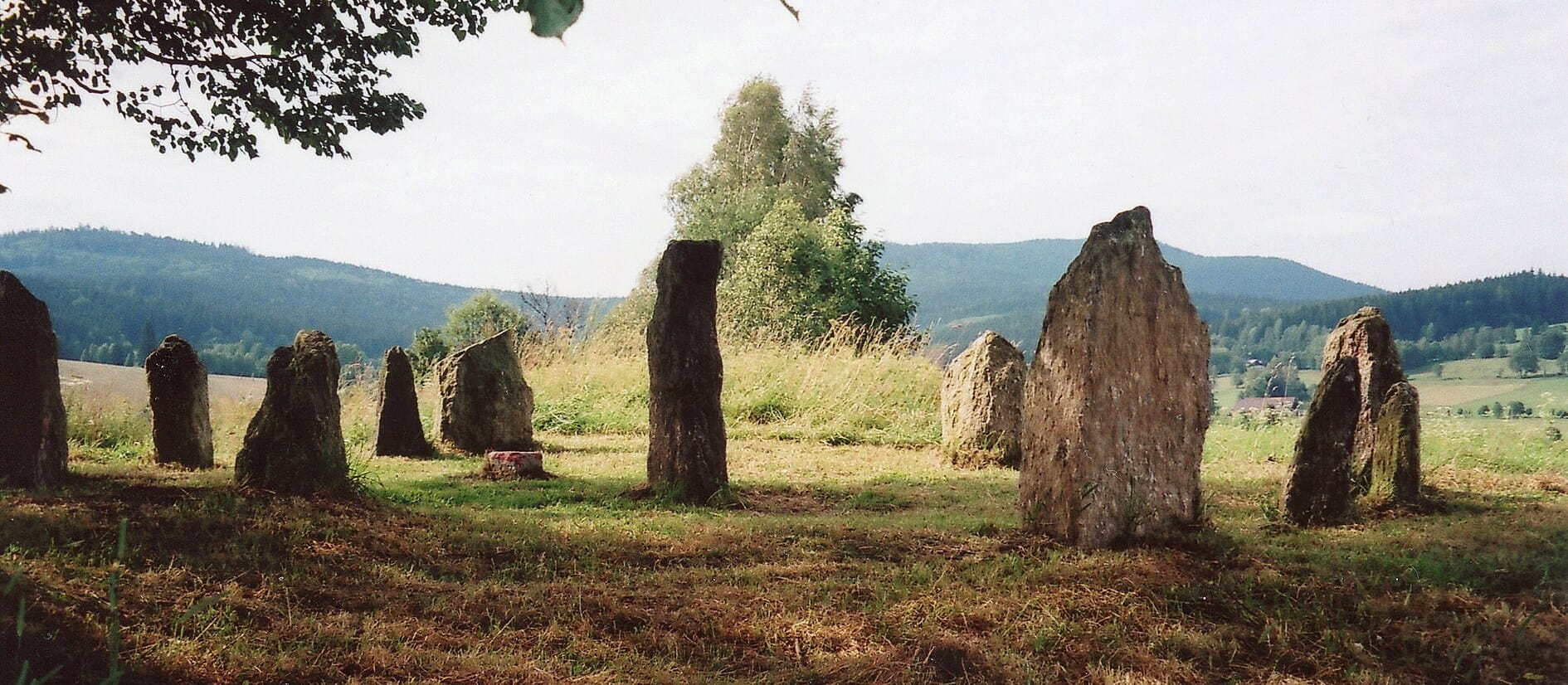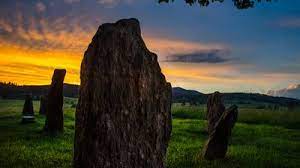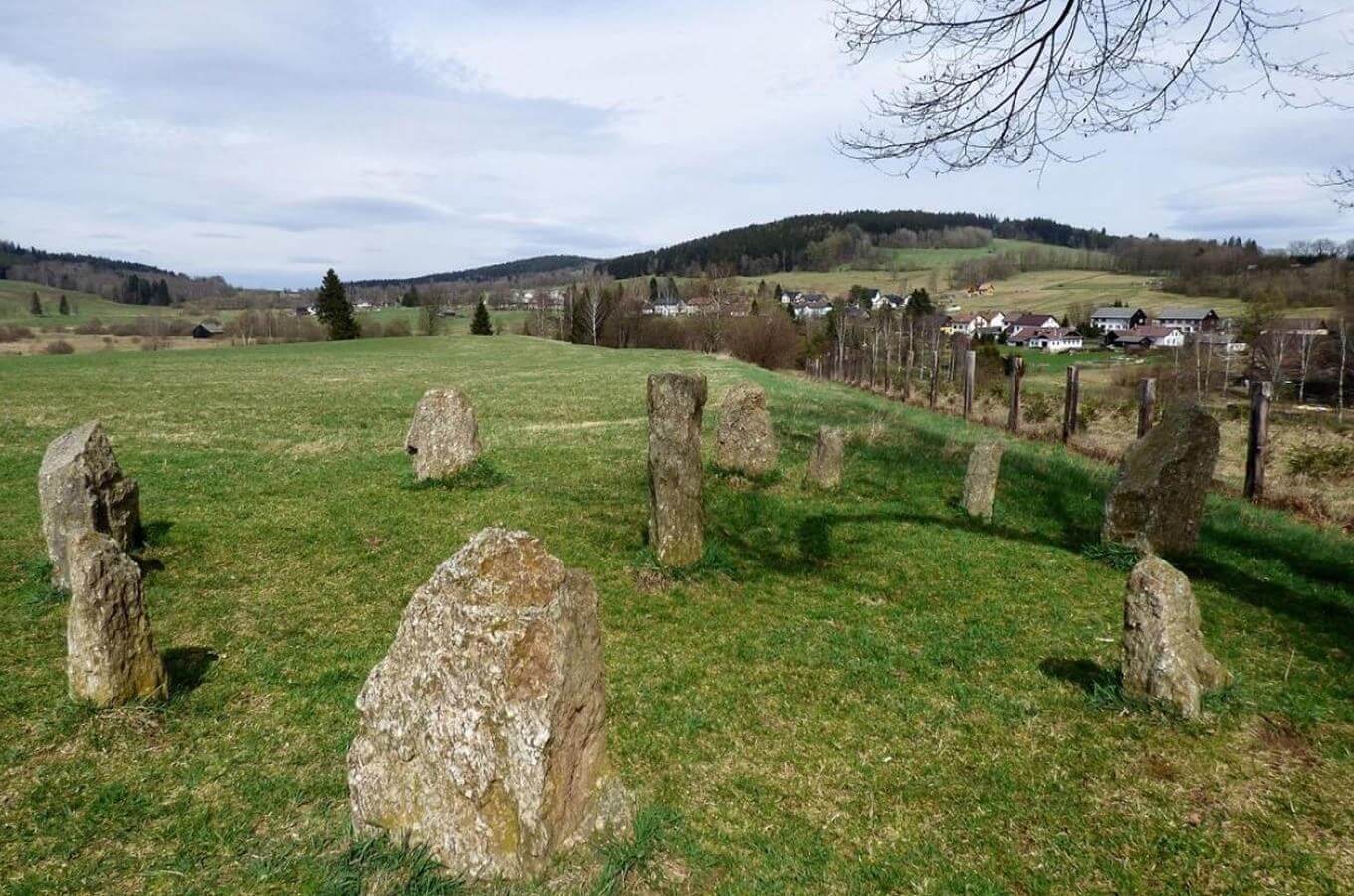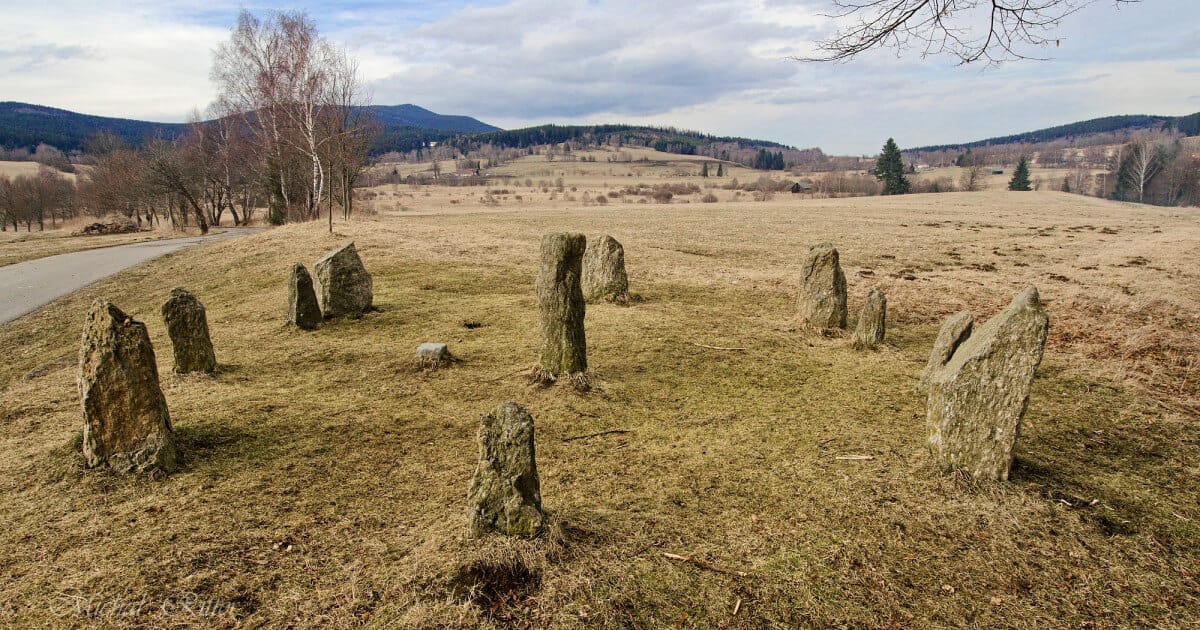Suitable for hiking
Suitable for cross-country skiing
Suitable for skis
Suitable for snowboard
Suitable for bicycle
Suitable for wheelchair
Just less than a kilometre northwest of the town centre you will find the Volar Menhirs. Sometimes they are also referred to as the Volar roundel or the Volar cromlech, but all the names express the same thing - a circle of 11 large stones. They have only been standing in their current location on the hill by the Two Lime Trees since April 28, 2007, but their history is much longer, estimated at several thousand years.
The same stones were part of a larger roundabout in the Ore Mountains, which had to give way to the construction of a new road. They date back to pre-Christian times and their transfer to Volary is thanks to the geologist and chemist Pavel Polák and his friends and the support of the town of Volary. The largest of the stones, which vary in height and shape, weighs less than 500 kg. Their height varies from 50 to 130 cm.
The Volarian menhirs are designed as a sanctuary and a natural observatory at the same time. The tallest of the menhirs (the visor stele) stands in the centre, the other stones are in a circle around in positions corresponding to sunrise or sunset on the winter and summer solstice and on the Celtic festival of Beltain, and others to the south and north. The place was not chosen randomly, but it is the intersection of the imaginary straight lines connecting the Obří hrad (Giant's Castle) near Kašperské Hory and the Luč mountain above the Čertová stěna (Devil's Wall) near Vyšší Brod and the place near the village of Strážný, where there are two pagan solstice menhirs, with the Celtic oppidum Třísov (north of Český Krumlov). The land is private, but it is freely accessible to the public.
The Volarian menhirs have worked bases, some of them have clearly visible ron grooves, which are shapes formed by the long-term action of surface flowing water (rain or spring melt). The direction of the grooves confirms that these stones stood in the same upright position in their original location. Their material is also unique, which is the so-called ochre rutile, which is not commonly found in the Volary area. The Celtic settlement in our country was also connected with Šumava, so the Volary menhirs are exactly where they belong.
Walk along Česká Street past the museum and continue along the same street up a slight hill to the site.

